Modulation of photogenerated holes for enhanced photoelectrocatalytic performance
Abstract
Utilizing clean energy derived from photoelectrocatalytic reactions is expected to be an excellent choice to fundamentally solve the problem of the human energy crisis. Photoelectrochemical (PEC) cell can effectively promote charge separation and improve solar energy conversion efficiency since it combines the advantages of photocatalysis and electrocatalysis. However, the hole transfer and subsequent oxidation reaction in the PEC process are slow, resulting in the rapid recombination of photogenerated electron-hole pairs and low PEC performance. The half-oxidation reaction involving photogenerated holes is the bottleneck of PEC water splitting. Therefore, hole modulation has been an important research area in the field of catalysis. However, compared with electron modulation, research on hole modulation is limited and still faces great challenges. It is therefore of great significance to develop effective modulation strategies for photogenerated holes. This review summarizes the hole modulation strategies developed in the last five years, including hole sacrificial agents, nanostructural modification, heterostructure construction and cocatalyst modification. Hole modulation dynamics studies, such as transient absorption spectroscopy, time-resolved photoluminescence spectroscopy, transient photovoltage and scanning electrochemical microscopy, are also summarized. Moreover, relevant conclusions and an outlook are proposed.
Keywords
INTRODUCTION
Solar energy is clean, renewable, sustainable and abundant. Currently, solar energy conversion and storage have become important options to solve the global energy shortage and environmental pollution challenges[1-3]. Semiconductor-based photocatalysis for splitting water into hydrogen is a renewable and sustainable technology for direct solar-to-chemical energy conversion. However, the relatively low solar energy conversion efficiency limits its practical applications[4-6]. The main semiconductor photocatalytic process can be divided into three steps: (i) the catalyst absorbs photons equal to or greater than the energy of its bandgap width and generates electron-hole pairs by excitation; (ii) photogenerated electron-hole separation and transfer to the semiconductor surface; (iii) transfer to the reactive species to undergo surface reactions (surface complex or effective reactions). The solar energy conversion efficiency is determined by these steps. To improve the efficiency of the photocatalytic process, it is necessary to effectively enhance the separation and transportation of photogenerated charges and simultaneously make the charges migrate to the surface and further initiate the surface reactions of the chemical compounds. During the photocatalytic water splitting process, the hydrogen evolution reaction usually takes place simultaneously with the oxygen evolution reaction (OER). It is noteworthy that the OER becomes the bottleneck of photocatalytic water decomposition because it involves multiple proton- and electron-transfer steps.
The generation rate of holes depends on the illumination light intensity, light absorption and charge separation of the photoelectrode, while the consumption rate of holes depends on the rate of surface charge recombination and hole transfer into solution. However, the water oxidation reaction involving photogenerated holes is much slower than the recombination process. Figure 1 shows a schematic illustration of the processes of semiconductor-based photoelectrocatalytic water splitting and the associated reaction timescales. The accumulated holes not only lead to an increase in the recombination rate of the catalyst, resulting in a reduction in catalytic activity, but also oxidize the catalyst itself, leading to a decrease in catalyst stability and deactivation. Since the discovery of water splitting catalyzed by a single-crystal TiO2 photoelectrode in 1972, photoelectrochemical (PEC) catalysis based on semiconductor photoelectrodes has attracted extensive attention for solar-to-energy conversion[7-9]. PEC water splitting combines photocatalysis and electrocatalysis, which can effectively promote charge separation and improve solar energy utilization[9]. Furthermore, a series of studies have been carried out on semiconductor materials used as photocatalytic OER photoanodes, including transition metal oxides, hydroxides, nitrides and selenides, metal-organic frameworks (MOFs) and non-metallic polymer semiconductor graphitic carbon nitrides
Figure 1. Schematic illustration of the processes of photoinduced charge separation, recombination, transfer and the final catalytic reaction in semiconductor-based photoelectrocatalytic water splitting and the associated reaction timescales.
Noble metal oxides, such as RuO2 and IrO2, are the most commonly selected materials to modulate photogenerated holes to enhance PEC performance[17]. However, the high cost of noble metals is not sustainable for practical implementation. Therefore, developing low-cost and efficient photogenerated hole modulation candidates that can rapidly initiate oxidation half-reactions has become an urgent challenge in this field. Regarding hole modulation, by designing and modifying the materials that match the valence band energy level of the photoelectrode semiconductor, the photogenerated holes can be efficiently extracted and the recombination of photogenerated electron-hole pairs can be suppressed. Catalytic regulation to ensure that the holes in the valence band have sufficient potential to oxidize the target molecule is an alternative method[18,19]. Thus, the effective separation and transport of photogenerated carriers on the surface can be improved and the charges can effectively participate in the surface reaction, which can effectively improve the PEC efficiency. In 2019, Sun et al. reviewed the development of photogenerated hole modulation in PEC catalysis for solar fuel production, with a focus on surface polarization strategies[15]. So far, the recent advancements in PEC catalysts have yet to be reviewed clearly. Compared to electron modulation, limited research work has been contributed to the field of hole modulation.
This review focuses on the hole modulation of semiconductor-based photoelectrocatalysts in the last five years. The studies of modulation strategies and dynamics form two main sections. The PEC performance is sensitive to the electrode surface structure. In this review, the modulation strategies section covers the recent advances in the design strategies of photoelectrocatalysts with excellent PEC performance through hole modulation, including hole sacrificial agents, nanostructural modification, heterostructure construction and cocatalyst modification [Figure 2]. In the cocatalyst modification section, recent progress on low-cost carbon-based materials is highlighted. The analysis of the transport process of photogenerated holes on the surface is helpful for the design and synthesis of efficient photoelectrocatalysts. Therefore, this review also emphasizes various techniques for studying hole modulation dynamics, such as transient absorption spectroscopy, time-resolved photoluminescence spectroscopy, transient photovoltage and scanning electrochemical microscopy. Moreover, relevant conclusions and outlooks are proposed. This review will trigger the design and construction of efficient photoelectrocatalysts.
HOLE MODULATION STRATEGIES IN PHOTOELECTROCATALYSIS
To suppress photogenerated electron-hole recombination and accelerate hole-to-solution transfer, methods such as introducing hole sacrificial agents, nanostructural modification, heterostructure construction and cocatalyst loading have been developed. The modification of nanostructure regulates the electrostatic field on the surface of the catalyst and promotes the migration of holes. The construction of a heterojunction can realize hole extraction through charge transfer between two semiconductor materials with different energy level positions. The loading of a cocatalyst can effectively extract the photogenerated holes and carry out surface reactions by means of energy level matching with the valence band of the semiconductor.
Hole sacrificial agents
In PEC catalysis, the photogenerated holes migrate to the active site and then accumulate, which affects the subsequent hole migration. The consumption of holes can ensure that the subsequent holes continue to migrate and improve the PEC efficiency. Commonly used sacrificial agents in PEC systems include Na2S-Na2SO3[20,21], triethanolamine (TEOA)[22,23] and H2O2[24-26] and these have been widely used to evaluate interfacial charge transfer properties. Thorne et al. measured the photocurrent-voltage curves of a hematite photoanode and found that the photoanode with H2O2 as hole scavengers has lower onset potential values[24]. This means that there will be fewer photogenerated holes accumulated on the surface of the photoanode after inducing hole scavengers[24]. Unfortunately, the introduction of excess sacrificial agents not only increases the cost but also results in secondary chemical pollution[27]. Alternatively, it is also an important research direction to transform sacrificial agents into value-added chemicals through selective organic synthesis reactions and to cooperate with electrons in the reduction reaction[28]. However, this process remains a major challenge. According to the current research background, researchers mainly prefer to develop efficient PEC catalysts without the use of sacrificial agents.
Nanostructural modification
As mentioned above, researchers are currently working on developing efficient PEC catalysts that do not use sacrificial agents. PEC performance is sensitive to the electrode surface structure. The valence band edges of some semiconductors are commonly more positive than the thermodynamic potential for the OER, leading to a high oxidation potential for holes in the valence band. The modulation of holes is a feasible method to enhance photocatalytic performance. Researchers have tuned the electronic structure of the semiconductor by introducing heteroatoms, as well as introducing defect states to adjust the atomic structure to increase the charge separation efficiency and further carry out the surface reaction.
Heteroatom doping
The introduction of impurity states through heteroatom doping with, for example, metal cations, S, C, N and O in semiconductors provides the opportunity of trapping photogenerated electrons or holes, so that the photogenerated electrons and holes will be located in different regions, respectively[29,30]. This strategy can reduce the overlap of photogenerated electrons and holes and improve charge transport and separation[31,32]. Zhang et al. introduced non-metallic N atoms into NiFeOx catalysts and used them as cocatalysts to modify a BiVO4 photoanode, in which the O sites in NiFeOx and BiVO4 were partially replaced by low-electronegativity N atoms, leading to their electronic reconfiguration[18]. The morphological and structural characterization of the BiVO4/N:NiFeOx photoanodes with a rough flocculent structure is shown in Figure 3A-D. The weak electron-attracting capacity of N atoms leads to electron enrichment on Fe and Ni. The electron injection from Ni atoms into the V sites in the BiVO4 lattice is beneficial for improving the stability of oxygen evolution, while the Fe sites can effectively attract holes to promote the PEC activity. The final obtained BiVO4/N:NiFeOx exhibited an excellent photocurrent density of 6.4 mA·cm-2 at 1.23 V
Figure 3. (A-D) Morphological and structural characterization, (E) linear sweep voltammograms and (F) half-cell applied bias photon-to-current efficiency results of BiVO4/N:NiFeOx photoanodes[18].
Meng et al. synthesized two-dimensional (2D) atomically thin Zn10In16S34 nanosheet arrays and achieved oxygen doping and Zn and S vacancies at the surface through low-temperature heat treatment[33]. The excessive surface defect states were then passivated by an ultrathin Al2O3 layer. The obtained photoelectrode showed remarkably enhanced PEC OER performance due to the fast electron-hole pair separation and prolonged lifetime of the carriers[33]. However, improper chemical doping may alter the crystal form of the semiconductor and reduce the lifetime of holes, thereby increasing the kinetic challenge of driving catalysis[10,34]. In addition, the control of the concentration and distribution of heteroatom doping on the surface of the photoanode catalysts remains challenging.
Defect engineering
Defect engineering can efficiently modulate the electronic structure and surface properties of a catalyst to reduce the reaction energy barrier for PEC performance. Oxygen vacancies are the most common defects[35]. Any treatment that changes the chemical environment of the catalyst (temperature annealing, treatment under different atmospheres during growth, laser irradiation, and so on) can lead to the formation of these oxygen defect states[36,37]. Zhang et al. fabricated a BiVO4 catalyst modified with a FeNiOOH cocatalyst rich in oxygen vacancies (BiVO4/Vo-FeNiOOH) through a simple and economical NaBH4 reduction method[38]. The introduced oxygen vacancies accelerate hole transfer and promote efficient electron-hole pair separation, leading to a negative shift in the starting potential and OER acceleration. The achieved photocurrent of the BiVO4/Vo-FeNiOOH catalyst was more than four times that of pure BiVO4 due to the introduction of oxygen vacancies in the system[38]. Li et al. successfully prepared
In addition to oxygen vacancies, the introduction of other vacancies can also prolong and migrate the photogenerated carriers to the surface to participate in the reactions[33]. Zhao et al. introduced S vacancies to a CdS photoanode surface through H2O2 etching and adjusted the vacancy concentration by controlling the etching time[40]. The photocurrent density of the CdS nanorods etched by H2O2 for 35 s reached
Construction of heterostructures
In addition to the nanostructural modification of photoanodes, a highly conductive and active semiconductor can also be used directly on the photoanode surface to form a heterojunction photoelectrode. The construction of heterojunctions can effectively separate the photoelectron holes by satisfying the appropriate energy level positions between the two semiconductors (p-n/n-n)[43,44]. For low-energy light-induced holes, Z-type nanocomposites have been successfully constructed by coupling suitable band gap semiconductors[45]. Photoanodes with Z-type electronic transfer result in enhanced light-harvesting properties and charge separation. For a g-C3N4/semiconductor composite, the photogenerated electrons of the semiconductor transfer to the valence band of g-C3N4 and then recombine with the photogenerated holes derived from g-C3N4. Therefore, the photogenerated electrons on g-C3N4 and the photogenerated holes on modified oxides have strong reducing and oxidizing properties. This can lead to charge separation and improve the PEC activity of the catalyst. MOFs with a large surface area are also used in PEC systems. The construction of MOF-based heterojunctions can increase the internal electric field by the conjugated π electrons in the linkers [Figure 4]. Wang et al. fabricated Z-scheme heterostructures of TiO2 nanorods (NRs) coated by MOFs and obtained UiO-66@TiO2 and UiO-67@TiO2 photoanodes. Compared with pristine TiO2, UiO-66@TiO2 and UiO-67@TiO2 showed enhanced photocurrent density in the PEC water oxidation process[25].
Figure 4. Schematic diagram of conjugated π electrons in a MOF (UiO-67) inducing an internal electric field to promote the charge transfer, followed by the Z-scheme mechanism[25].
For a type-II heterojunction, the semiconductor photoanode will be combined with a semiconductor that has a relatively low valence band position. The photogenerated electrons in the conduction band of the modified semiconductor will be transferred to the photoanode. The photogenerated holes in the semiconductor anode will be transferred to the modified semiconductor and further induce the transfer of holes. Different type-II heterojunction photoanodes, such as WO3/BiVO4, ZnO/BiVO4, ZnO/Fe2O3,
Loading of cocatalysts
Coupling semiconductor photoanodes with good electrocatalytic OER cocatalysts is a common strategy to enhance the charge transfer efficiency from the semiconductor to the electrolyte and improve the oxidation kinetics[48]. The addition of OER catalysts can significantly inhibit the surface recombination of photogenerated charge carriers and reduce the accumulation of holes on the electrode surface. Moreover, some OER cocatalysts have been reported to passivate the photoanode surface to prevent corrosion of the photoanode, thereby improving its stability under operating conditions. Noble metal oxides, such as RuO2 and IrO2, are the most commonly used hole transfer cocatalysts, which can effectively reduce the overpotential of oxidation reactions[17]. However, due to the high cost of these catalysts, the development of abundant and low-cost cocatalysts is indispensable.
Transition metal-based catalysts
To replace high-cost precious metals and their oxides for OER cocatalysts, many transition metal-based catalysts have been investigated extensively for improving PEC kinetics, including transition metal oxides (e.g., Co3O4[49], CoOx[50] and NiO[51]), transition metal hydroxides (e.g., NiOOH[52], CoOOH[53] and FeOOH[54]) and transition metal phosphates (e.g., Fe-Pi[55] and Co-Pi[56]). However, despite these impressive achievements, the role of the cocatalysts in photoanodes is still under debate. Traditional cocatalysts as OER electrocatalysts increase the oxidation rate of water by reducing the activation energy of the four-electron oxidation process, which is the rate-determining step in the water splitting process. Some researchers have reported that the role of the cocatalyst is to rapidly trap the hole, thereby reducing recombination at the semiconductor surface. Li et al. demonstrated a citrate-assisted deposition method, in which Ni-Fe hydroxide was overlaid on a Fe2O3 nanowire photoanode [Figure 5A][57]. As shown by TEM images
Figure 5. (A) Schematic illustration of depositing NiFe hydroxide overlays on an Fe2O3 nanowire photoanode. (B and C) Lattice-resolved TEM images of a NiFe hydroxide-coated Fe2O3 nanowire photoanode[57].
Carbon-based materials
Carbon-based materials have been widely investigated as cocatalysts for PEC catalysis due to their abundance, low cost and variety[59]. Carbon-based nanomaterials, such as graphene[60], carbon nanotubes (CNTs)[61] and carbon dots (CDs)[62], offer multiple benefits in PEC systems. For example, they not only facilitate light harvesting but also act as channels for charge transport, thereby facilitating enhanced PEC activity due to synergistic effects and electrical coupling[63]. The high charge-carrier mobility of graphene and CNTs makes them promising candidates for high-mobility charge. However, the reports on those materials are mainly for electron modulation and rarely for hole modulation. Zhao et al. fabricated a WO3 nanosheet array/silane/graphene oxide (WO3 NS/silane/GO)-based photoanode[64]. On the photoanode, the silane molecules act as hole collection sites and drive the fast transfer of the collected holes to the GO. As a hole transfer channel, GO can immediately promote holes to participate in chemical reactions at the electrode-electrolyte interface, resulting in stable and continuous charge carrier separation and transfer. The results showed that the photocurrent of the WO3 NS/silane/GO electrode (1.25 mA·cm-2 at 1.23 V vs. a RHE) can be enhanced by a factor of 1.8 compared to the pristine WO3 NS (0.69 mA·cm-2) electrode[64].
Compared to the above-mentioned carbon materials, CDs exhibit unique PEC properties, including photoluminescence and photoinduced electron transport and storage, and have been widely used as photoelectrocatalytic cocatalysts[65,66]. A large number of studies have reported CDs as cocatalysts for electron regulation. In recent years, some works have also reported the application of CDs in hole regulation. Liang et al. reported a CD-modified Co3O4/In2O3 composite photocatalyst for an efficient photo-driven CO2 reduction reaction[67]. CDs can be obtained by the electrolysis of graphite rods. The preparation process of CDs is simple and compared with the noble metal Ru, the economic cost of CDs is negligible [Figure 6A]. Through analysis by transient photoelectric technology, it was found that the CDs in the composite not only participated in the electron transfer process but also in the hole transfer process
Figure 6. (A) Schematic comparison of carbon and noble metal Ru regarding resource consumption and economic cost. (B) Proposed mechanism of CD/Co3O4/In2O3 composite for water oxidation and CO2 reduction reaction[67].
In addition to accelerating the extraction of holes and inhibiting the recombination of photogenerated carriers, CDs also appear to accelerate the kinetics of the oxidation reaction[71]. Zhou et al. designed a FeOOH/BiVO4 photoanode and then co-modified CDs to obtain a CD/FeOOH/BiVO4 composite[72]. The modified photoanode had a lower overpotential and higher photocurrent. The maximum incident photon-to-current conversion efficiency of the composite catalyst was 6.70 and 1.86 times higher than that of the BiVO4 and FeOOH/BiVO4 electrodes, respectively. Zhou et al. reported that these results were due to the joint influence of three effects: (i) the coordinated catalysis of CDs and FeOOH significantly improves the OER kinetics due to the introduction of oxygen vacancies; (ii) the heterojunction between CDs and BiVO4 suppresses the bulk charge recombination effectively; (iii) CDs effectively promote the harvesting of ultraviolet and visible light[72]. Wang et al. synthesized nitrogen-doped CDs with a phenolic group
CDs have many unique advantages as cocatalysts, as they can facilitate light harvesting and act as agents for photogenerated charge transfer. Furthermore, CDs can also serve as active centers, providing more electrochemically active sites through inherent structural defects, abundant surface/edge functional groups and heteroatom doping. The physical and chemical properties of CDs, such as size, defects, dopants and functional groups, strongly influence their PEC performance. Therefore, in order to realize the wide application of CDs, the controlled synthesis of CDs with specific structures is necessary. Furthermore, to understand the origin and decay of activity, more control experiments are required to investigate the effect of CD structure on PEC performance.
Organic hole transfer materials
Currently, because of the tunable electrical properties of organic semiconductors or organic molecular materials, the construction of inorganic/organic composite photoanode has attracted increasing attention. Organic long-chain polymer hole transport materials are widely used in solar cells, such as spiro-OMeTAD (2,2′,7,7′-tetrakis(N,N-p-dimethoxyphenylamino)-9,9′-spirobifluorene) and PTAA (poly-[bis(4-phenyl)(2,4,6-trimethylphenyl)amine])[74]. In addition, some research has shown that polyimide polymers have high thermal and chemical stability. Polyimide film electrodes with the semiconductor characteristics of a narrow band gap and suitable band structure have good catalytic ability and stability for the OER in strongly alkaline electrolytes. Thus, the integration of semiconductors with functional polymer layers can be used to achieve efficient and stable photoelectrodes under alkaline conditions. Gao et al. coated a metal-free poly(p-phenylene pyromellitimide) (PI) film on a BiVO4 photoanode by in-situ polymerization[75]. The PI film not only acts as a good OER catalytic layer but also promotes the transfer of photogenerated holes on the surface of the photoanode. The photocurrent density of the obtained PI/BiVO4 was increased by ~2.5 times compared to a pristine BiVO4 photoanode[75]. Gu et al. reported a metal-free bifunctional polyaniline (PANI)/CD electrocatalyst capable of producing hydrogen under light, in which PANI as a p-type semiconductor was used to solve the problem of insufficient protons[76].
Small molecular materials that are soluble in water or polar solvents are more suitable for photoelectric catalytic systems. Currently, many research works have reported that organic hole-transporting molecular materials can be used to modify photoanodes as cocatalysts for hole modulation to improve charge separation efficiencies, such as ferrocene ligands, phenothiazine (PTZ) and trifluoroacetic acid[77-80]. A suitable hole-accepting ligand should satisfy the energy requirement for continuous hole transfer and interact closely with the photoelectrode to enable ultrafast hole transfer. Niu et al. systematically studied the role of carbazole-derived hole transport molecules anchoring on the surface of a CdS QD/TiO2 film[80]. As shown in Figure 7, dithiol-functionalized carbazole and a ruthenium coordination compound (RubdaS) were used as a hole transfer molecule and OER catalyst, respectively. These results demonstrated the importance of hole transport molecules for rapid hole transfer. A series of hole transport molecules, including carbazole, triphenylamine (TPA) and PTZ, were further anchored on the surface of a BiVO4/CdS photoanode. The photogenerated holes from the photoanode can be extracted rapidly by these molecules. Among these different hole transport molecules, the obtained BiVO4/CdS-TPA/CoBi exhibited an ultralow onset potential of 0.15 V vs. a RHE and the highest photocurrent density of 5.2 mA/cm2[81]. Wu et al. reported the transfer kinetics of photogenerated holes in CdS nanorods (NRs) by PTZ molecules adsorbed on the surface[82]. In the presence of PTZ, the trapped holes are transferred to the PTZ to form PTZ+ radical cations and this hole transfer rate is found to be much faster than the slow electron-trapping hole recombination in CdS NRs. This proved that the adsorbed PTZ can effectively extract trapped holes in CdS NRs[82]. In addition, Li et al. fabricated CdSe QDs modified with PTZ hole-accepting ligands and found that the PTZ modification of the CdSe QDs could significantly enhance the PEC H2 evolution efficiency[83].
Figure 7. Simplified interfacial hole hopping scheme for integrated photoanode[80].
RESEARCH METHODS FOR KINETICS OF HOLE TRANSFER
In the semiconductor photocatalytic process, the lifetimes of the kinetic processes, such as migration, transport and recombination, generally range from a few nanoseconds to a few microseconds, whereas the timescales of photocatalytic reaction process are microseconds to seconds. Therefore, to effectively study the transport and transfer of charges in photoelectrodes, time-resolved analytical testing techniques are necessary.
Transient absorption spectroscopy (TAS)
Time-resolved spectroscopy is a new field developed by pulse technology combined with weak and transient signal detection methods, focusing on the investigation of the interaction between light and the sample. TAS is a pump-probe time-resolved technique that has been widely used to investigate dynamic processes. TAS can directly obtain information on the molecular ground, excited, oxidation and reduction states at different relaxation times and is therefore an effective means to explore the kinetics of charge transfer[84]. Tamaki et al. studied the intrinsic dynamics of electron-hole pairs in the range from femtoseconds to picoseconds and found that the holes could be trapped on the nanoparticle surfaces rapidly while the electrons were slowly trapped in the bulk phase with long lifetimes[85]. Wang et al. used TAS to fundamentally understand the charge carrier dynamics of hole-accepting CDs as cocatalysts[71]. The transient absorption spectra of g-C3N4 measured with and without Ag+ electron scavengers showed that the signal observed at 510 nm was mainly attributed to photogenerated holes, while the wide signal at 700 nm was attributed to photogenerated electrons. The amplitude of mCDs/CN at 700 nm was higher than that of pure CN, indicating that the holes were transferred to mCDs efficiently and the number of long-lived electrons in CN was increased.
For heterostructured systems, Lian et al. synthesized CdS/ZnS core/mesoporous-shell (CdS@mZnS) heterostructures with superior photocatalytic activity[86]. TAS and the time-resolved microwave conductivity revealed efficient photoinduced hole transfer from the CdS core to the ZnS shell. The long-lived photoinduced charge separation (> 2.4 ms) via defect-mediated hole transfer resulted in good catalytic activity and stability for CdS@mZnS[86]. Andrews et al. also demonstrated sub-picosecond hole-transfer kinetics in β-Sn0.23V2O5/CdSe heterostructures by TAS measurements[87]. The three-dimensional TA color maps of β-Sn0.23V2O5 nanowires and β-Sn0.23V2O5/CdSe heterostructures were acquired. The bare β-Sn0.23V2O5 nanowires have two broad induced absorption bands at 500-600 and 650-750 nm, assigned to excited holes in the mid-gap state and β-Sn0.23V2O5 electrons in the conduction band, respectively. The results demonstrated that the β-Sn0.23V2O5/CdSe heterostructures have rapid excited-state charge transfer kinetics[87].
Time-resolved photoluminescence (TRPL) spectroscopy
In addition to TAS, TRPL spectroscopy is another effective means to probe electron transfer kinetics[88]. With the development of science and technology, the temporal resolution of fluorescence spectroscopy has reached the femtosecond scale (< 100 fs). Direct hole transfer rate tests can be carried out by adding a small amount of hole sacrificial agent to the catalyst with the corresponding carrier lifetime achieved by TRPL spectroscopy. Yu et al. tested the lifetime of photogenerated carriers of InP/ZnS-S QDs using TRPL spectroscopy[89]. A range of carrier lifetimes can be obtained by the stepwise addition of electron and hole sacrificial agents (Ni2+/H2A) [Figure 8A and B]. The final electron and hole transfer rates were obtained by fitting the obtained data, indicating a calculated electron transfer rate from InP/ZnS-S QDs to Ni2+ of
Figure 8. Steady state and time-resolved photoluminescence quenching experiment of InP/ZnS-S QDs (525 nm, 15 min). Static photoluminescence quenching for InP/ZnS-S QDs in water after addition of different amounts of Ni2+ (A) and H2A (B). PL decay curves of InP/ZnS-S QDs after addition of different amounts of Ni2+ (C) and H2A (D), respectively[89].
Transient photoelectric technology (TPV)
TPV is also an effective technique for determining interfacial charge transfer kinetics and photoelectron extraction in composites. In contrast to TAS and TRPL, TPV is a characterization technology that excites the catalysts in a photoelectrode by an optical signal and measures the dynamic process of the electrical signal inside the composite materials. Zhang et al. reported SnO2-x overlay-coated BiVO4 (SnO2-x/BiVO4) and investigated its hole migration via TPV[58]. The photoanode provided positive TPV signals, meaning that the surface migration behavior of photoinduced holes occurred. Compared with pure BiVO4, the SnO2-x/BiVO4 photoanode had the highest TPV signal intensity, indicating that the coated SnO2-x overlay facilitated the photoinduced holes to reach the photoanode surface. In addition, the prolonged delay time of the photovoltage signal for both the SnO2/BiVO4 and SnO2-x/BiVO4 photoanodes indicated the existence of long-lived holes as a result of the reduction in surface recombination[58]. Kang et al. reported a metal-free dual-function photo-assisted catalyst of PANI/CDs for overall water splitting[62]. It was found that the addition of CDs reduced the recombination rate of photogenerated carriers. The number of photogenerated electrons consumed in the catalytic reaction could be calculated by integrating the tested TPV curves. It was found that the photocurrent intensity of PANI/CDs in 5 vol.‰ KOH (pH = 8.5)/ACN (v/v) was much higher than that in ACN solution, which may be due to the participation of photogenerated holes in the OER, resulting in increasing photocurrent intensity[76].
Electrochemical impedance spectroscopy (EIS)
Different from the above photophysical methods, electrochemical methods can directly record information, such as the photocurrent and photocurrent-potential (i-V) curves of PEC reactions. Photocurrent responses can reveal the separation efficiency of photogenerated electron-hole pairs. Among the electrochemical methods, EIS, through transient measurements, can be employed to investigate interfacial processes, such as redox reactions at the interfaces and the migration of electroactive species[91,92]. EIS measurements are based on the perturbation signals with a set of sine voltages or current signals at different frequencies. Currently, EIS analysis is a relatively well-established method for investigating PEC systems[93].
Abbas et al. studied the hole transfer pathway in a TiO2 photoanode sensitized by Au nanoclusters using EIS[94]. Through the analysis of the Nyquist plots obtained as a function of applied potentials under light, the possible charge transfer mechanism in the photoelectrode can be achieved. From the low-frequency semicircle in the Nyquist plots at low bias potentials, the hole transfer process can be analyzed. The EIS studies confirmed that when Au15(SG)13 and Au18(SG)14 were employed, hole transfer occurred through the HOMO level of the nanoclusters and when Au25(SG)18 was used, the hole transfer proceeded with the surface traps in TiO2[94]. In EIS, the charge transfer resistance (Rct) of the photoanode is sensitive to surface processes and can be used to analyze the transfer of photogenerated holes. Kolay et al. investigated the charge recombination rate in a CdS-sensitized TiO2 photoanode by modifying CDs through EIS and found that the Rct has a strong dependence on illumination but a low dependence on voltage[95]. This implies that charge transfer is influenced by photogenerated holes[95].
Peter et al. characterized the competition between photogenerated carrier transfer and the recombination of an α-Fe2O3 electrode using photoelectrochemical impedance spectroscopy (PEIS)[96,97]. The variation of EIS with electrodes for different layered α-Fe2O3 films was also recorded. The PEIS response of the α-Fe2O3 electrode exhibits characteristic transmission line behavior in the high-frequency part. Peter et al. speculated that this may be due to the slow hole transport, probably between adjacent surface iron species[96,97]. Moreover, Peter et al. studied the effects of introducing Mn on the surface carrier dynamics of the hematite nanorods through intensity-modulated photocurrent spectroscopy (IMPS)[98]. In contrast to EIS, IMPS measurements control the intensity of light on the electrode. In IMPS, the upper quadrant semicircle corresponds to the competition between charge transfer and recombination and the lower quadrant semicircle corresponds to the RC attenuation of the system [Figure 9]. Compared to the pristine hematite, the radius of the low-frequency semicircle (upper quadrant) of the Mn-doped hematite decreased and the hole transfer efficiency improved. The IMPS result revealed that the introduction of Mn not only increased the hole transfer rate constant but also reduced the surface recombination rate constant[98].
Figure 9. (A) Schematic of competition between hole transfer (ktr) and recombination (krec). (B) A typical photocurrent of a photoanode in an electrolyte. (C) A typical example of a complex photocurrent or IMPS spectrum[98].
In addition, for the development of the PEC performance, understanding the interactions between ions in the electric double layer and charge carriers is critical. EIS measurements can also be used to study the surface ion adsorption. Zheng et al. showed that the capacitance at the interface of an InSe/graphene photoanode and the solution under illumination was ~2.3 times greater than that in the dark[99]. The result showed an interaction between the photogenerated holes and OH- species, which further enhanced the concertation of OH- surface adsorption and improved the PEC performance[99].
Scanning electrochemical microscopy (SECM)
Furthermore, it is of great significance to measure the interfacial processes of photoanodes at the microscopic scale. SECM is a scanning probe technique for electrical analysis, which can obtain information on substrate topography and localized electrochemical activity[100]. The concept of SECM is to place the ultramicroelectrode (diameter of < 25 μm) near the surface of the photoanode (or substrate) and to probe the changes in the concentration of active molecules in the electrolyte to investigate its chemical properties. Therefore, it is a powerful tool for imaging microelectrochemical activity and studying the kinetic behavior of reactive species under in-situ liquid-phase reaction conditions. In addition, the ultramicroelectrode can be scanned locally in the x, y or z direction through a piezoelectric actuator or stepper motor, so SECM can also be used to investigate spatial electrochemical information. SECM has also been used to explore the OER interfacial hole migration kinetics of composite photocatalytic systems [Figure 10A]. Zhang et al. studied the effect of oxygen vacancies on the hole transfer behavior of a BiVO4/VO-FeNiOOH catalyst through SECM. SECM was employed at a UV-vis/SECM platform by the feedback mode[38]. Under visible-light irradiation, the current at the UME increases, which is mainly caused by photogenerated holes participating in the oxidation process of the active species [Figure 10B]. The results show that the kinetics of hole transfer in different photoanodes was in the order of: BiVO4/VO-FeNiOOH BiVO4/FeNiOOH BiVO4
Figure 10. (A) Principle of SECM setup. (B) Probe approach curves and (C) rate constants (Keff) of BiVO4-based photoanodes. (D) SECM image (100 × 100 µm2) of BiVO4/Vo-FeNiOOH photoanode surface under light[38].
The interfacial kinetic data of photogenerated holes can be further achieved through theoretical model simulations after obtaining different approaching curves. Liu et al. fabricated a CD-modified TiO2
CONCLUSIONS
In this review, the strategies of hole modulation to improve solar-to-energy conversion efficiency are outlined. The modulation of holes facilitates the efficient separation of photogenerated carriers and accelerates the subsequent oxidation reactions. The catalysts in photoanodes with different compositions and structures show different reactivity. Hole modulation strategies, including hole sacrificial agents, nanostructural modification, heterostructure construction and cocatalyst modification, are effective methods to suppress electron-hole pair recombination and enhance PEC performance. The design of catalysts to modulate holes is summarized and the application of low-cost carbon materials as cocatalysts in hole modulation is highlighted. In addition, some kinetic techniques have also been summarized to analyze the transport and transfer kinetics of photogenerated holes. Although some achievements have been made, understanding how to acquire highly active PEC photoanodes via the rational design and regulation of fine structures and interfaces remains a significant challenge. The effects of the compositions and structures of the photoanode on the photogenerated charge migration and PEC properties need to be studied more thoroughly.
In these discussions, we have focused on designing and developing PEC catalysts for efficient solar-to-energy conversion. However, there are still many significant challenges that need to be addressed in order to make catalysts economically competitive. First, the PEC process involves the transport of charges and the coupling of subsequent reactions. The rate at which the photogenerated holes transfer to the semiconductor surface is effectively matched with the rate of transferring into the solution, enabling the efficient utilization of the photogenerated charges. Therefore, it is important to develop research methods to effectively distinguish the kinetic processes for the achievement of rate matching. Second, if the spatially separated photogenerated charges cannot be overlapped and synergized with the catalytic sites, it will lead to the recombination of the photogenerated charges, thereby reducing the PEC efficiency. The development of high-resolution characterization instruments can effectively promote the design of efficient PEC catalysts.
DECLARATIONS
Authors’ contributionsConceptualization, investigation, writing - original draft: Liu N
Writing - review & editing: Liu Y (Yixian Liu), Liu Y ( Yunliang Liu), Li Y, Cheng Y
Writing - review & editing, supervision, funding acquisition: Li H
Availability of data and materialsNot applicable.
Financial support and sponsorshipThis work was supported by the National Natural Science Foundation of China (Grants 52072152, 51802126), the Jiangsu University Jinshan Professor Fund and the Jiangsu Specially-Appointed Professor Fund, Open Fund from Guangxi Key Laboratory of Electrochemical Energy Materials.
Conflicts of interestAll authors declared that there are no conflicts of interest.
Ethical approval and consent to participateNot applicable.
Consent for publicationNot applicable.
Copyright© The Author(s) 2023.
REFERENCES
1. Fang Y, Hou Y, Fu X, Wang X. Semiconducting polymers for oxygen evolution reaction under light illumination. Chem Rev 2022;122:4204-56.
2. Kranz C, Wächtler M. Characterizing photocatalysts for water splitting: from atoms to bulk and from slow to ultrafast processes. Chem Soc Rev 2021;50:1407-37.
3. Morikawa T, Sato S, Sekizawa K, Suzuki TM, Arai T. Solar-driven CO2 reduction using a semiconductor/molecule hybrid photosystem: from photocatalysts to a monolithic artificial leaf. Acc Chem Res 2022;55:933-43.
4. Pan J, Shen S, Chen L, Au C, Yin S. Core-shell photoanodes for photoelectrochemical water oxidation. Adv Funct Mater 2021;31:2104269.
5. Thalluri SM, Bai L, Lv C, Huang Z, Hu X, Liu L. Strategies for semiconductor/electrocatalyst coupling toward solar-driven water splitting. Adv Sci 2020;7:1902102.
6. Niu F, Wang D, Li F, Liu Y, Shen S, Meyer TJ. Hybrid photoelectrochemical water splitting systems: from interface design to system assembly. Adv Energy Mater 2020;10:1900399.
7. Fujishima A, Honda K. Electrochemical photolysis of water at a semiconductor electrode. Nature 1972;238:37-8.
8. Zhao E, Du K, Yin PF, et al. Advancing photoelectrochemical energy conversion through atomic design of catalysts. Adv Sci 2022;9:e2104363.
9. Marwat MA, Humayun M, Afridi MW, et al. Advanced catalysts for photoelectrochemical water splitting. ACS Appl Energy Mater 2021;4:12007-31.
10. Corby S, Rao RR, Steier L, Durrant JR. The kinetics of metal oxide photoanodes from charge generation to catalysis. Nat Rev Mater 2021;6:1136-55.
11. Yao T, An X, Han H, Chen JQ, Li C. Photoelectrocatalytic materials for solar water splitting. Adv Energy Mater 2018;8:1800210.
12. Zhuang Z, Li Y, Yu R, et al. Reversely trapping atoms from a perovskite surface for high-performance and durable fuel cell cathodes. Nat Catal 2022;5:300-10.
13. Zhuang Z, Huang J, Li Y, Zhou L, Mai L. The holy grail in platinum-free electrocatalytic hydrogen evolution: molybdenum-based catalysts and recent advances. ChemElectroChem 2019;6:3570-89.
14. Huang J, Zhuang Z, Zhao Y, et al. Back-gated van der waals heterojunction manipulates local charges toward fine-tuning hydrogen evolution. Angew Chem Int Ed Engl 2022;61:e202203522.
15. Sun R, Zhang Z, Li Z, Jing L. Review on photogenerated hole modulation strategies in photoelectrocatalysis for solar fuel production. ChemCatChem 2019;11:5875-84.
16. Rahman MZ, Edvinsson T, Gascon J. Hole utilization in solar hydrogen production. Nat Rev Chem 2022;6:243-58.
17. Sahoo PP, Mikolášek M, Hušeková K, et al. Si-based metal-insulator-semiconductor structures with RuO2-(IrO2) films for photoelectrochemical water oxidation. ACS Appl Energy Mater 2021;4:11162-72.
18. Zhang B, Yu S, Dai Y, et al. Nitrogen-incorporation activates NiFeOx catalysts for efficiently boosting oxygen evolution activity and stability of BiVO4 photoanodes. Nat Commun 2021;12:6969.
19. Wang J, Liao T, Wei Z, Sun J, Guo J, Sun Z. Heteroatom-doping of non-noble metal-based catalysts for electrocatalytic hydrogen evolution: an electronic structure tuning strategy. Small Methods 2021;5:e2000988.
20. Liu G, Yang Y, Li Y, et al. Band structure engineering toward low-onset-potential photoelectrochemical hydrogen production. ACS Mater Lett 2020;2:1555-60.
21. Li F, Benetti D, Zhang M, Feng J, Wei Q, Rosei F. Modulating the 0D/2D interface of hybrid semiconductors for enhanced photoelectrochemical performances. Small Methods 2021;5:e2100109.
22. Tashakory A, Karjule N, Abisdris L, Volokh M, Shalom M. Mediated growth of carbon nitride films via spray-coated seeding layers for photoelectrochemical applications. Adv Sustain Syst 2021;5:2100005.
23. Karjule N, Singh C, Barrio J, et al. Carbon nitride-based photoanode with enhanced photostability and water oxidation kinetics. Adv Funct Mater 2021;31:2101724.
24. Thorne JE, Jang JW, Liu EY, Wang D. Understanding the origin of photoelectrode performance enhancement by probing surface kinetics. Chem Sci 2016;7:3347-54.
25. Wang X, Sun W, Tian Y, et al. Conjugated π electrons of MOFs drive charge separation at heterostructures interface for enhanced photoelectrochemical water oxidation. Small 2021;17:e2100367.
26. Dotan H, Sivula K, Grätzel M, Rothschild A, Warren SC. Probing the photoelectrochemical properties of hematite (α-Fe2O3) electrodes using hydrogen peroxide as a hole scavenger. Energy Environ Sci 2011;4:958-64.
27. Jiang P, Yu K, Yuan H, et al. Encapsulating Ag nanoparticles into ZIF-8 as an efficient strategy to boost uranium photoreduction without sacrificial agents. J Mater Chem A 2021;9:9809-14.
28. Zhang T, Lu S. Sacrificial agents for photocatalytic hydrogen production: effects, cost, and development. Chem Catalysis 2022;2:1502-5.
29. Shen S, Lindley SA, Chen X, Zhang JZ. Hematite heterostructures for photoelectrochemical water splitting: rational materials design and charge carrier dynamics. Energy Environ Sci 2016;9:2744-75.
30. Prasad U, Young JL, Johnson JC, et al. Enhancing interfacial charge transfer in a WO3/BiVO4 photoanode heterojunction through gallium and tungsten co-doping and a sulfur modified Bi2O3 interfacial layer. J Mater Chem A 2021;9:16137-49.
31. Sun D, Zhang X, Shi A, et al. Metal-free boron doped g-C3N5 catalyst: efficient doping regulatory strategy for photocatalytic water splitting. Appl Surface Sci 2022;601:154186.
32. Nyarige JS, Paradzah AT, Krüger TPJ, Diale M. Mono-Doped and Co-Doped nanostructured hematite for improved photoelectrochemical water splitting. Nanomaterials 2022;12:366.
33. Meng L, Rao D, Tian W, Cao F, Yan X, Li L. Simultaneous manipulation of O-doping and metal vacancy in atomically thin Zn10In16S34 nanosheet arrays toward improved photoelectrochemical performance. Angew Chem Int Ed Engl 2018;57:16882-7.
34. Yang R, Zhu R, Fan Y, Hu L, Chen Q. In situ synthesis of C-doped BiVO4 with natural leaf as a template under different calcination temperatures. RSC Adv 2019;9:14004-10.
35. Wen L, Li X, Zhang R, et al. Oxygen vacancy engineering of MOF-derived Zn-doped Co3O4 nanopolyhedrons for enhanced electrochemical nitrogen fixation. ACS Appl Mater Interfaces 2021;13:14181-8.
36. Wang S, Wang X, Liu B, et al. Vacancy defect engineering of BiVO4 photoanodes for photoelectrochemical water splitting. Nanoscale 2021;13:17989-8009.
37. Pan JB, Wang BH, Wang JB, et al. Activity and stability boosting of an oxygen-vacancy-rich BiVO4 photoanode by NiFe-MOFs thin layer for water oxidation. Angew Chem Int Ed Engl 2021;60:1433-40.
38. Zhang R, Ning X, Wang Z, et al. Significantly promoting the photogenerated charge separation by introducing an oxygen vacancy regulation strategy on the FeNiOOH Co-catalyst. Small 2022;18:e2107938.
39. Ji M, Chen R, Di J, et al. Oxygen vacancies modulated Bi-rich bismuth oxyiodide microspheres with tunable valence band position to boost the photocatalytic activity. J Colloid Interface Sci 2019;533:612-20.
40. Zhao Q, Liu Z, Guo Z, Ruan M, Yan W. The collaborative mechanism of surface S-vacancies and piezoelectric polarization for boosting CdS photoelectrochemical performance. Chem Eng J 2022;433:133226.
41. Ma M, Zhang K, Li P, Jung MS, Jeong MJ, Park JH. Dual Oxygen and tungsten vacancies on a WO3 Photoanode for enhanced water oxidation. Angew Chem Int Ed Engl 2016;55:11819-23.
42. Fernández-climent R, Giménez S, García-tecedor M. The role of oxygen vacancies in water splitting photoanodes. Sustain Energy Fuels 2020;4:5916-26.
43. Xu W, Tian W, Meng L, Cao F, Li L. Interfacial chemical bond-modulated z-scheme charge transfer for efficient photoelectrochemical water splitting. Adv Energy Mater 2021;11:2003500.
44. Li J, Yuan H, Zhang W, et al. Advances in Z-scheme semiconductor photocatalysts for the photoelectrochemical applications: A review. Carbon Energy 2022;4:294-331.
45. Mane P, Bae H, Burungale V, et al. Interface-engineered Z-scheme of BiVO4/g-C3N4 photoanode for boosted photoelectrochemical water splitting and organic contaminant elimination under solar light. Chemosphere 2022;308:136166.
46. Maity D, Karmakar K, Pal D, Saha S, Khan GG, Mandal K. One-dimensional p-ZnCo2O4/n-ZnO nanoheterojunction photoanode enabling photoelectrochemical water splitting. ACS Appl Energy Mater 2021;4:11599-608.
47. Ho W, Chen J, Wu J. Epitaxial, energetic, and morphological synergy on photocharge collection of the Fe2TiO5/ZnO nanodendrite heterojunction array photoelectrode for photoelectrochemical water oxidation. ACS Sustain Chem Eng 2021;9:8868-78.
48. Hao J, Zhuang Z, Cao K, et al. Unraveling the electronegativity-dominated intermediate adsorption on high-entropy alloy electrocatalysts. Nat Commun 2022;13:2662.
49. Dong G, Hu H, Huang X, Zhang Y, Bi Y. Rapid activation of Co3O4 cocatalysts with oxygen vacancies on TiO2 photoanodes for efficient water splitting. J Mater Chem A 2018;6:21003-9.
50. Cao X, Wang Y, Lin J, Ding Y. Ultrathin CoOx nanolayers derived from polyoxometalate for enhanced photoelectrochemical performance of hematite photoanodes. J Mater Chem A 2019;7:6294-303.
51. Li H, Yin M, Li X, Mo R. Enhanced photoelectrochemical water oxidation performance in bilayer TiO2/α-Fe2O3 Nanorod Arrays Photoanode with Cu:NiOx as hole transport layer and Co-Pi as Cocatalyst. ChemSusChem 2021;14:2331-40.
52. Wei J, Zhou C, Xin Y, Li X, Zhao L, Liu Z. Cooperation effect of heterojunction and co-catalyst in BiVO4/Bi2S3/NiOOH photoanode for improving photoelectrochemical performances. New J Chem 2018;42:19415-22.
53. Zhang B, Huang X, Hu H, Chou L, Bi Y. Defect-rich and ultrathin CoOOH nanolayers as highly efficient oxygen evolution catalysts for photoelectrochemical water splitting. J Mater Chem A 2019;7:4415-9.
54. Wang T, Long X, Wei S, et al. Boosting hole transfer in the fluorine-doped hematite photoanode by depositing ultrathin amorphous FeOOH/CoOOH Cocatalysts. ACS Appl Mater Interfaces 2020;12:49705-12.
55. Vo T, Tai Y, Chiang C. Novel hierarchical ferric phosphate/bismuth vanadate nanocactus for highly efficient and stable solar water splitting. Appl Catalysis B Environ 2019;243:657-66.
56. Klahr B, Gimenez S, Fabregat-Santiago F, Bisquert J, Hamann TW. Photoelectrochemical and impedance spectroscopic investigation of water oxidation with “Co-Pi”-coated hematite electrodes. J Am Chem Soc 2012;134:16693-700.
57. Li M, Liu T, Yang Y, et al. Zipping Up NiFe(OH)x-encapsulated hematite to achieve an ultralow turn-on potential for water oxidation. ACS Energy Lett 2019;4:1983-90.
58. Zhang K, Liu J, Wang L, et al. Near-complete suppression of oxygen evolution for photoelectrochemical H2O oxidative H2O2 synthesis. J Am Chem Soc 2020;142:8641-8.
59. Liu Z, Du Y, Zhang P, Zhuang Z, Wang D. Bringing catalytic order out of chaos with nitrogen-doped ordered mesoporous carbon. Matter 2021;4:3161-94.
60. Kaplan A, Yuan Z, Benck JD, et al. Current and future directions in electron transfer chemistry of graphene. Chem Soc Rev 2017;46:4530-71.
61. Rai S, Ikram A, Sahai S, Dass S, Shrivastav R, Satsangi VR. CNT based photoelectrodes for PEC generation of hydrogen: a review. Inter J Hydrog Energy 2017;42:3994-4006.
63. Ali M, Pervaiz E, Sikandar U, Khan Y. A review on the recent developments in zirconium and carbon-based catalysts for photoelectrochemical water-splitting. Inter J Hydrog Energy 2021;46:18257-83.
64. Zhao Z, Zheng L, Hu W, Zheng H. Synergistic effect of silane and graphene oxide for enhancing the photoelectrochemical water oxidation performance of WO3NS arrays. Electrochimica Acta 2018;292:322-30.
65. Ðorđević L, Arcudi F, Cacioppo M, Prato M. A multifunctional chemical toolbox to engineer carbon dots for biomedical and energy applications. Nat Nanotechnol 2022;17:112-30.
66. Zhai Y, Zhang B, Shi R, et al. Carbon dots as new building blocks for electrochemical energy storage and electrocatalysis. Advan Energy Mater 2022;12:2103426.
67. Liang Q, Yan X, Li Z, et al. Replacing Ru complex with carbon dots over MOF-derived Co3O4/In2O3 catalyst for efficient solar-driven CO2 reduction. J Mater Chem A 2022;10:4279-87.
68. Li F, Liu Y, Chen Q, et al. Transient photovoltage study of the kinetics and synergy of electron/hole co-extraction in MoS2/Ag-In-Zn-S/carbon dot photocatalysts for promoted hydrogen production. Chem Eng J 2022;439:135759.
69. Ye K, Wang Z, Gu J, et al. Carbon quantum dots as a visible light sensitizer to significantly increase the solar water splitting performance of bismuth vanadate photoanodes. Energy Environ Sci 2017;10:772-9.
70. Wang Y, Godin R, Durrant JR, Tang J. Efficient Hole trapping in carbon dot/oxygen-modified carbon nitride heterojunction photocatalysts for enhanced methanol production from CO2 under neutral conditions. Angew Chem Int Ed Engl 2021;60:20811-6.
71. Wang Y, Liu X, Han X, et al. Unique hole-accepting carbon-dots promoting selective carbon dioxide reduction nearly 100% to methanol by pure water. Nat Commun 2020;11:2531.
72. Zhou T, Chen S, Wang J, et al. Dramatically enhanced solar-driven water splitting of BiVO4 photoanode via strengthening hole transfer and light harvesting by co-modification of CQDs and ultrathin β-FeOOH layers. Chem Eng J 2021;403:126350.
73. Choi Y, Bae S, Kim B, Ryu J. Atomically-dispersed cobalt ions on polyphenol-derived nanocarbon layers to improve charge separation, hole storage, and catalytic activity of water-oxidation photoanodes. J Mater Chem A 2021;9:13874-82.
74. Rombach FM, Haque SA, Macdonald TJ. Lessons learned from spiro-OMeTAD and PTAA in perovskite solar cells. Energy Environ Sci 2021;14:5161-90.
75. Gao B, Wang T, Li Y, et al. Boosting the stability and photoelectrochemical activity of a BiVO4 photoanode through a bifunctional polymer coating. J Mater Chem A 2021;9:3309-13.
76. Gu X, Chen Z, Li Y, et al. Polyaniline/carbon dots composite as a highly efficient metal-free dual-functional photoassisted electrocatalyst for overall water splitting. ACS Appl Mater Interfaces 2021;13:24814-23.
77. Li F, Liu Y, Mao B, et al. Carbon-dots-mediated highly efficient hole transfer in I-III-VI quantum dots for photocatalytic hydrogen production. Appl Catalysis B Environ 2021;292:120154.
78. Liu Y, Zhou X, Shen C, et al. Hydrogen-bonding-assisted charge transfer: significantly enhanced photocatalytic H2 evolution over g-C3N4 anchored with ferrocene-based hole relay. Catal Sci Technol 2018;8:2853-9.
79. Olshansky JH, Balan AD, Ding TX, Fu X, Lee YV, Alivisatos AP. Temperature-dependent hole transfer from photoexcited quantum dots to molecular species: evidence for trap-mediated transfer. ACS Nano 2017;11:8346-55.
80. Niu F, Zhou Q, Liu R, Hu K. Photoinduced hole hopping across CdS quantum dot surfaces for photoelectrochemical water oxidation. ACS Appl Energy Mater 2022;5:1244-51.
81. Niu F, Zhou Q, Han Y, et al. Rapid hole extraction based on cascade band alignment boosts photoelectrochemical water oxidation efficiency. ACS Catal 2022;12:10028-38.
82. Wu K, Du Y, Tang H, Chen Z, Lian T. Efficient extraction of trapped holes from colloidal CdS nanorods. J Am Chem Soc 2015;137:10224-30.
83. Li XB, Liu B, Wen M, et al. Hole-accepting-ligand-modified CdSe QDs for dramatic enhancement of photocatalytic and photoelectrochemical hydrogen evolution by solar energy. Adv Sci 2016;3:1500282.
84. Forster M, Cheung DWF, Gardner AM, Cowan AJ. Potential and pitfalls: on the use of transient absorption spectroscopy for in situ and operando studies of photoelectrodes. J Chem Phys 2020;153:150901.
85. Tamaki Y, Furube A, Murai M, Hara K, Katoh R, Tachiya M. Dynamics of efficient electron-hole separation in TiO2 nanoparticles revealed by femtosecond transient absorption spectroscopy under the weak-excitation condition. Phys Chem Chem Phys 2007;9:1453-60.
86. Lian Z, Sakamoto M, Kobayashi Y, et al. Anomalous photoinduced hole transport in type I core/mesoporous-shell nanocrystals for efficient photocatalytic H2 evolution. ACS Nano 2019;13:8356-63.
87. Andrews JL, Cho J, Wangoh L, et al. Hole extraction by design in photocatalytic architectures interfacing CdSe quantum dots with topochemically stabilized tin vanadium oxide. J Am Chem Soc 2018;140:17163-74.
88. Taheri MM, Elbert KC, Yang S, et al. Distinguishing electron and hole dynamics in functionalized CdSe/CdS core/shell quantum dots using complementary ultrafast spectroscopies and kinetic modeling. J Phys Chem C 2021;125:31-41.
89. Yu S, Fan XB, Wang X, et al. Efficient photocatalytic hydrogen evolution with ligand engineered all-inorganic InP and InP/ZnS colloidal quantum dots. Nat Commun 2018;9:4009.
90. Fan XB, Yu S, Wang X, et al. Susceptible surface sulfide regulates catalytic activity of CdSe quantum dots for hydrogen photogeneration. Adv Mater 2019;31:e1804872.
91. Bredar ARC, Chown AL, Burton AR, Farnum BH. Electrochemical impedance spectroscopy of metal oxide electrodes for energy applications. ACS Appl Energy Mater 2020;3:66-98.
92. Gimenez S, Dunn HK, Rodenas P, et al. Carrier density and interfacial kinetics of mesoporous TiO2 in aqueous electrolyte determined by impedance spectroscopy. J Electroanal Chem 2012;668:119-25.
93. Cui J, Daboczi M, Regue M, et al. 2D bismuthene as a functional interlayer between BiVO4 and NiFeOOH for enhanced oxygen-evolution photoanodes. Adv Funct Mater 2022:2207136-48.
94. Abbas MA, Bang JH. Anomalous transition of hole transfer pathways in gold nanocluster-sensitized TiO2 photoelectrodes. ACS Energy Lett 2020;5:3718-24.
95. Kolay A, Kokal RK, Kalluri A, et al. New antimony selenide/nickel oxide photocathode boosts the efficiency of graphene quantum-dot co-sensitized solar cells. ACS Appl Mater Interfaces 2017;9:34915-26.
96. Wijayantha KG, Saremi-Yarahmadi S, Peter LM. Kinetics of oxygen evolution at α-Fe2O3 photoanodes: a study by photoelectrochemical impedance spectroscopy. Phys Chem Chem Phys 2011;13:5264-70.
97. Cummings CY, Marken F, Peter LM, Wijayantha KG, Tahir AA. New insights into water splitting at mesoporous α-Fe2O3 films: a study by modulated transmittance and impedance spectroscopies. J Am Chem Soc 2012;134:1228-34.
98. Peter LM, Wong LH, Abdi FF. Revealing the influence of doping and surface treatment on the surface carrier dynamics in hematite nanorod photoanodes. ACS Appl Mater Interfaces 2017;9:41265-72.
99. Zheng H, Lu Y, Ye KH, et al. Atomically thin photoanode of InSe/graphene heterostructure. Nat Commun 2021;12:91.
100. Bard AJ, Faulkner LR. Scanning electrochemical microscopy, 2nd ed.; New York: Marcel Dekker. 2001.
101. Liu N, Qin Y, Han M, et al. Investigation of regeneration kinetics of a carbon-dot-sensitized metal oxide semiconductor with scanning electrochemical microscopy. ACS Appl Energy Mater 2018;1:1483-8.
Cite This Article
How to Cite
Liu, N.; Liu, Y.; Liu, Y.; Li, Y.; Cheng, Y.; Li, H. Modulation of photogenerated holes for enhanced photoelectrocatalytic performance. Microstructures. 2023, 3, 2023001. http://dx.doi.org/10.20517/microstructures.2022.23
Download Citation
Export Citation File:
Type of Import
Tips on Downloading Citation
Citation Manager File Format
Type of Import
Direct Import: When the Direct Import option is selected (the default state), a dialogue box will give you the option to Save or Open the downloaded citation data. Choosing Open will either launch your citation manager or give you a choice of applications with which to use the metadata. The Save option saves the file locally for later use.
Indirect Import: When the Indirect Import option is selected, the metadata is displayed and may be copied and pasted as needed.



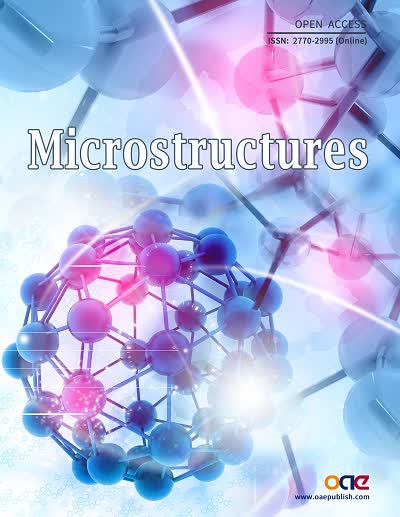











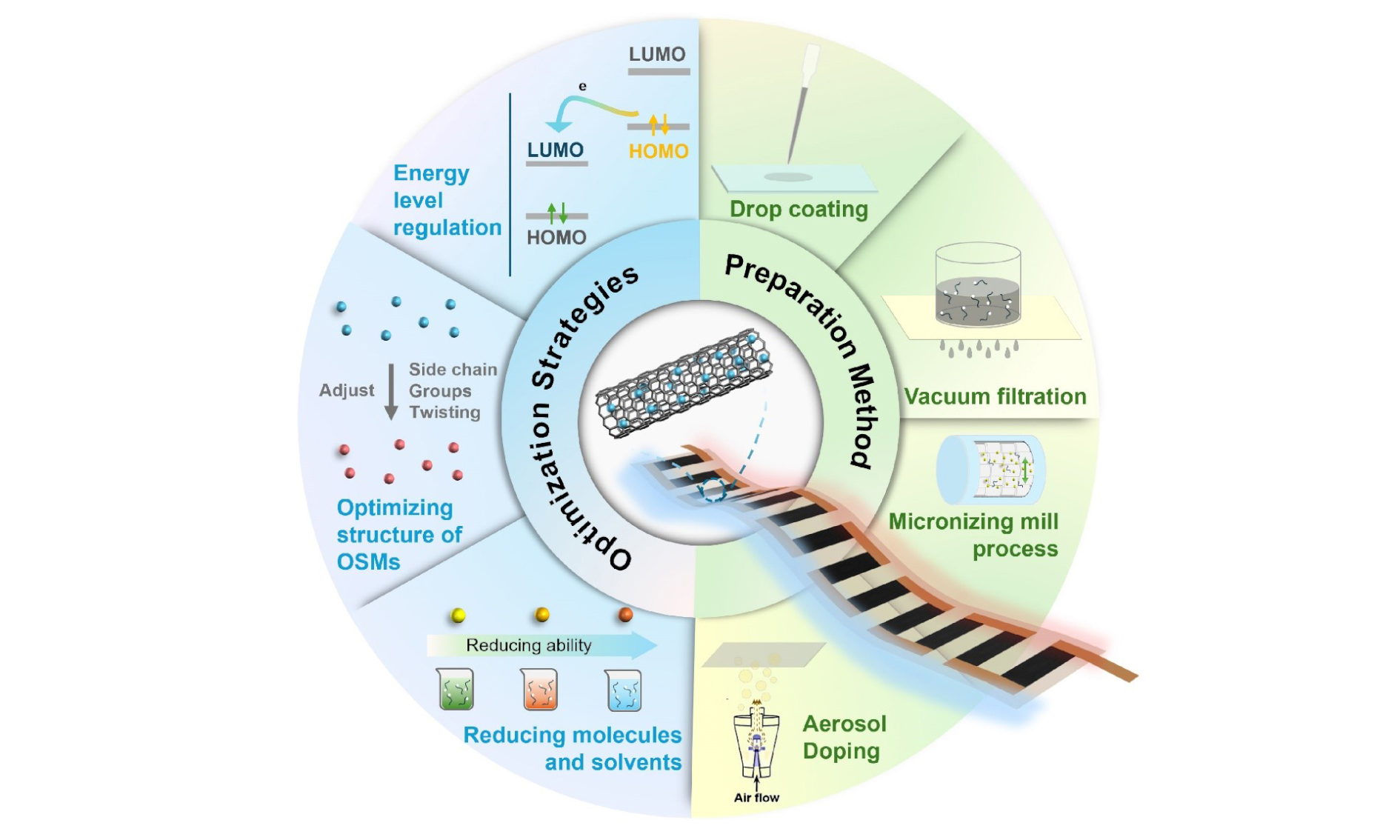



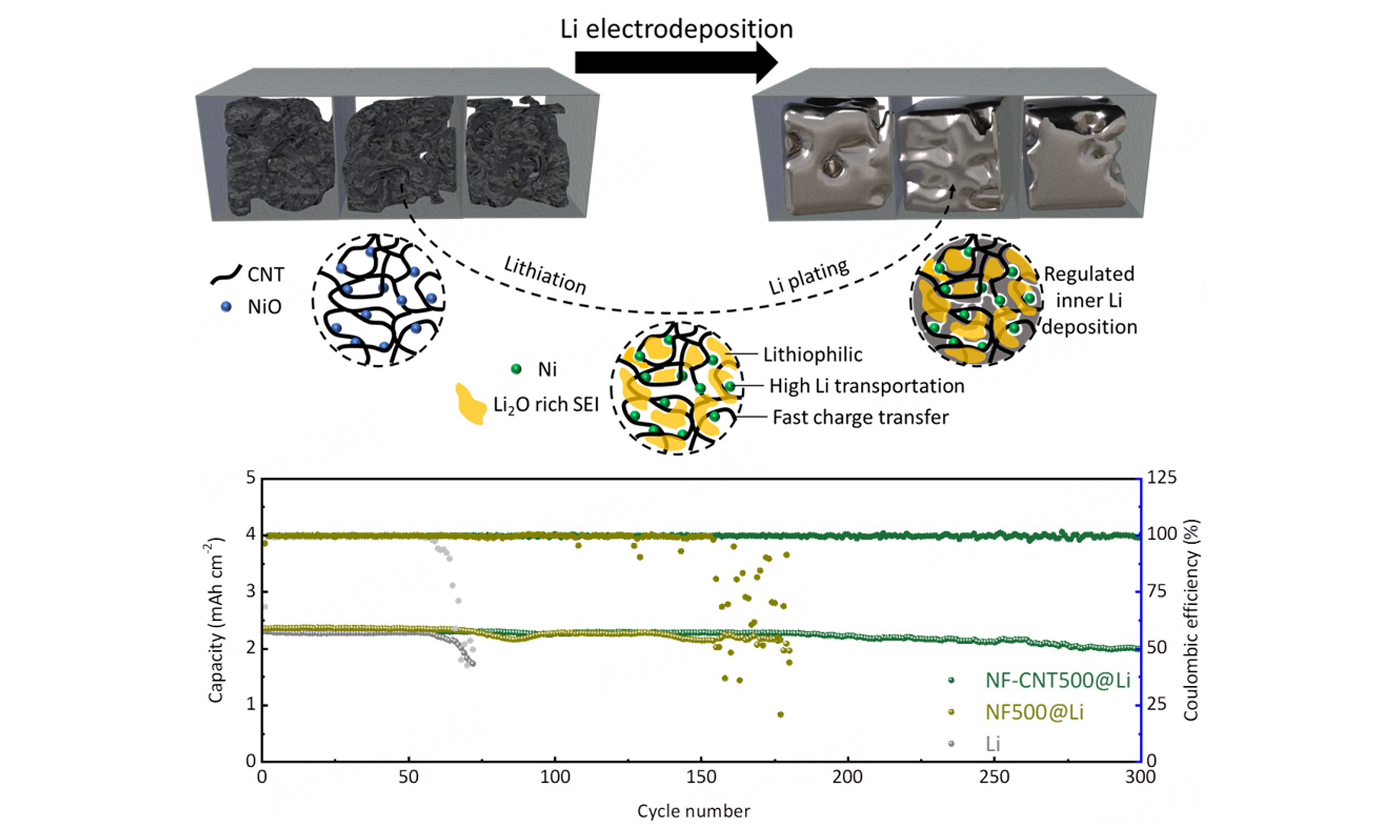
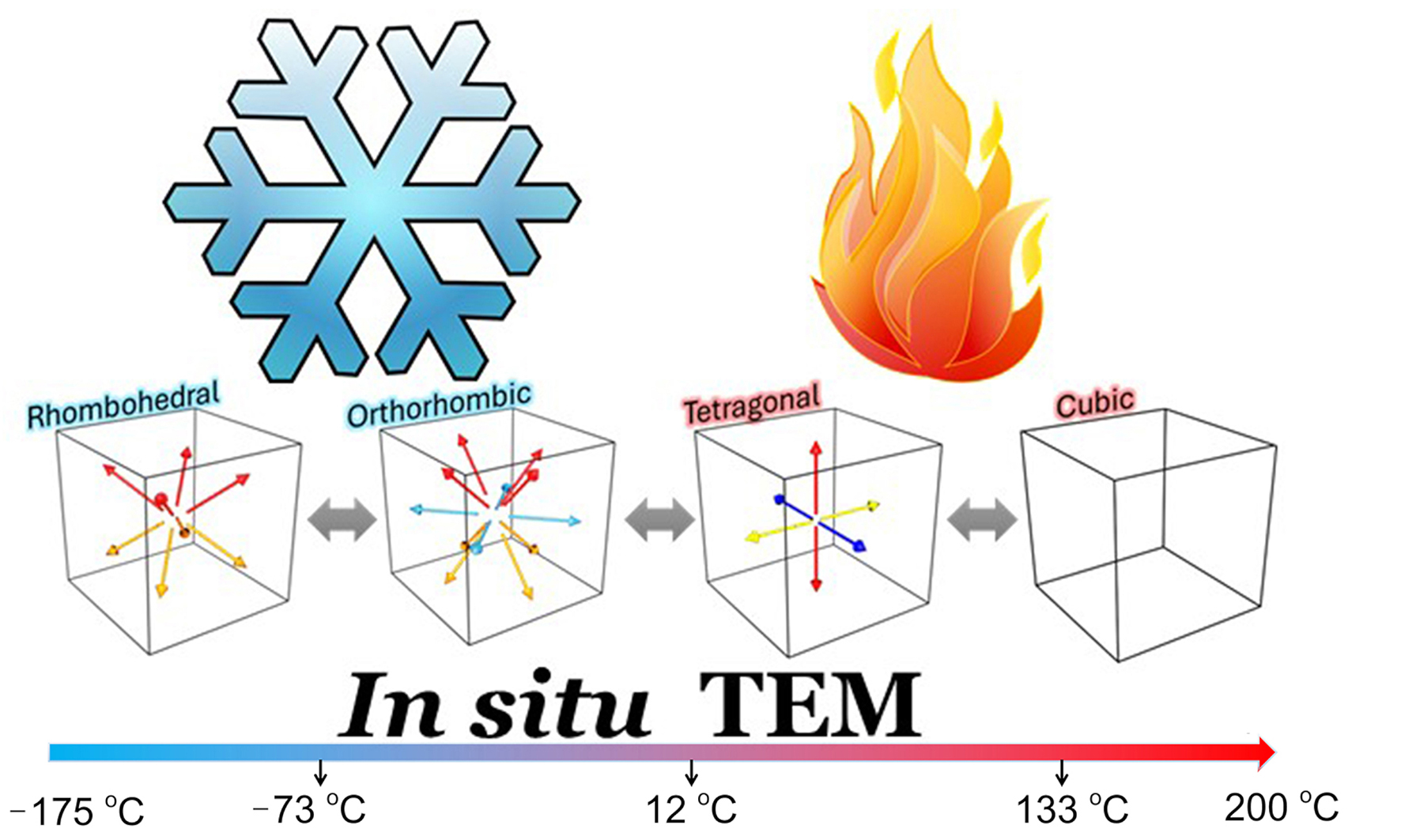
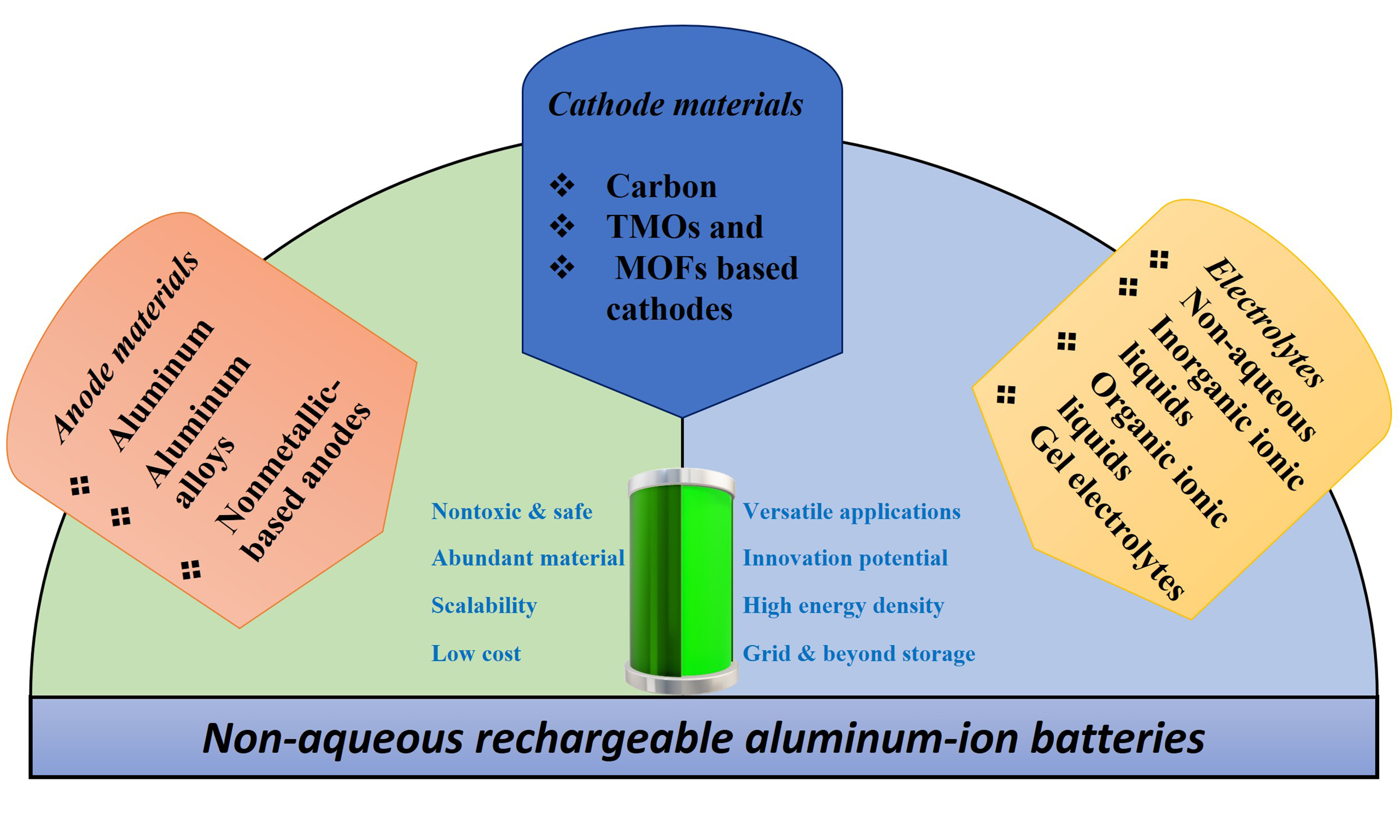
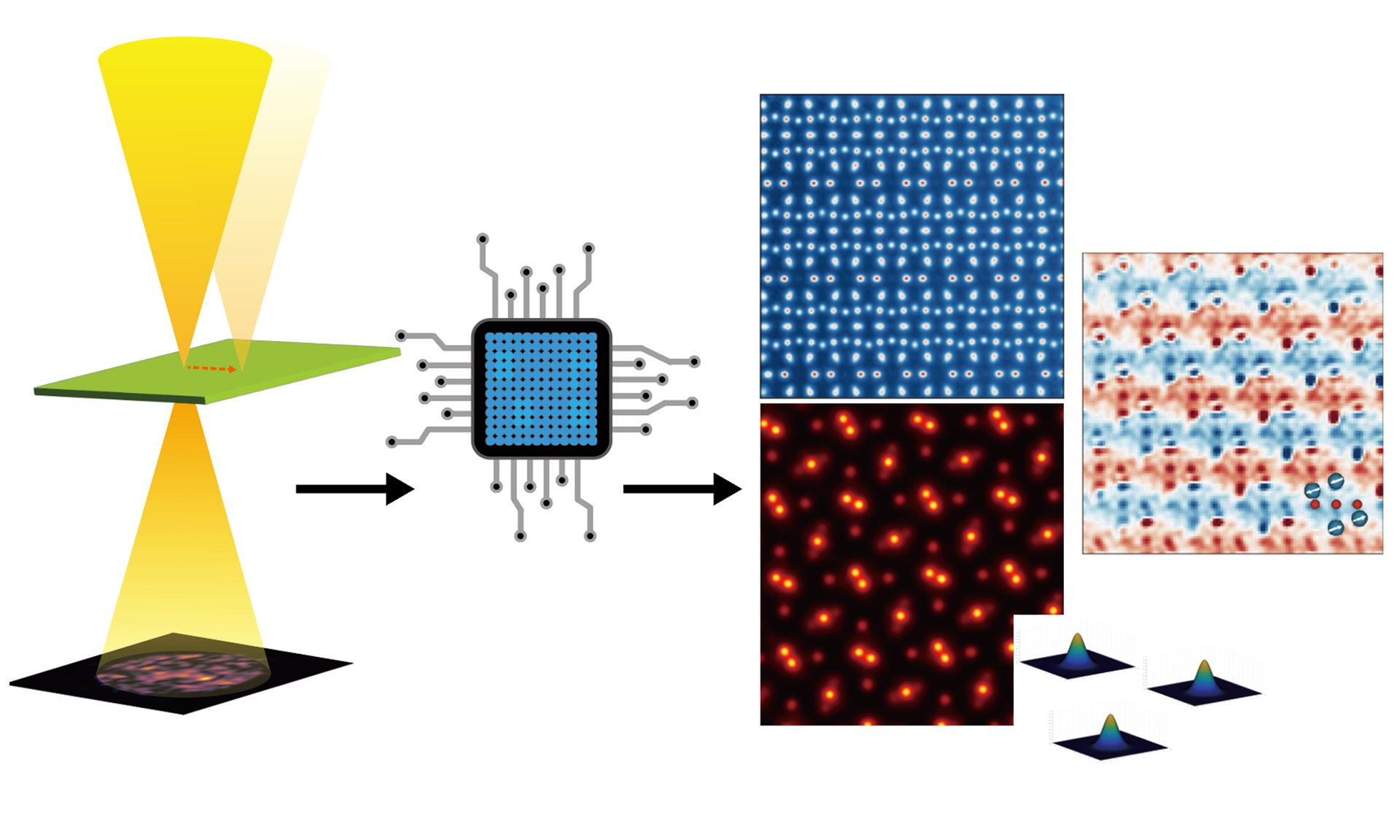

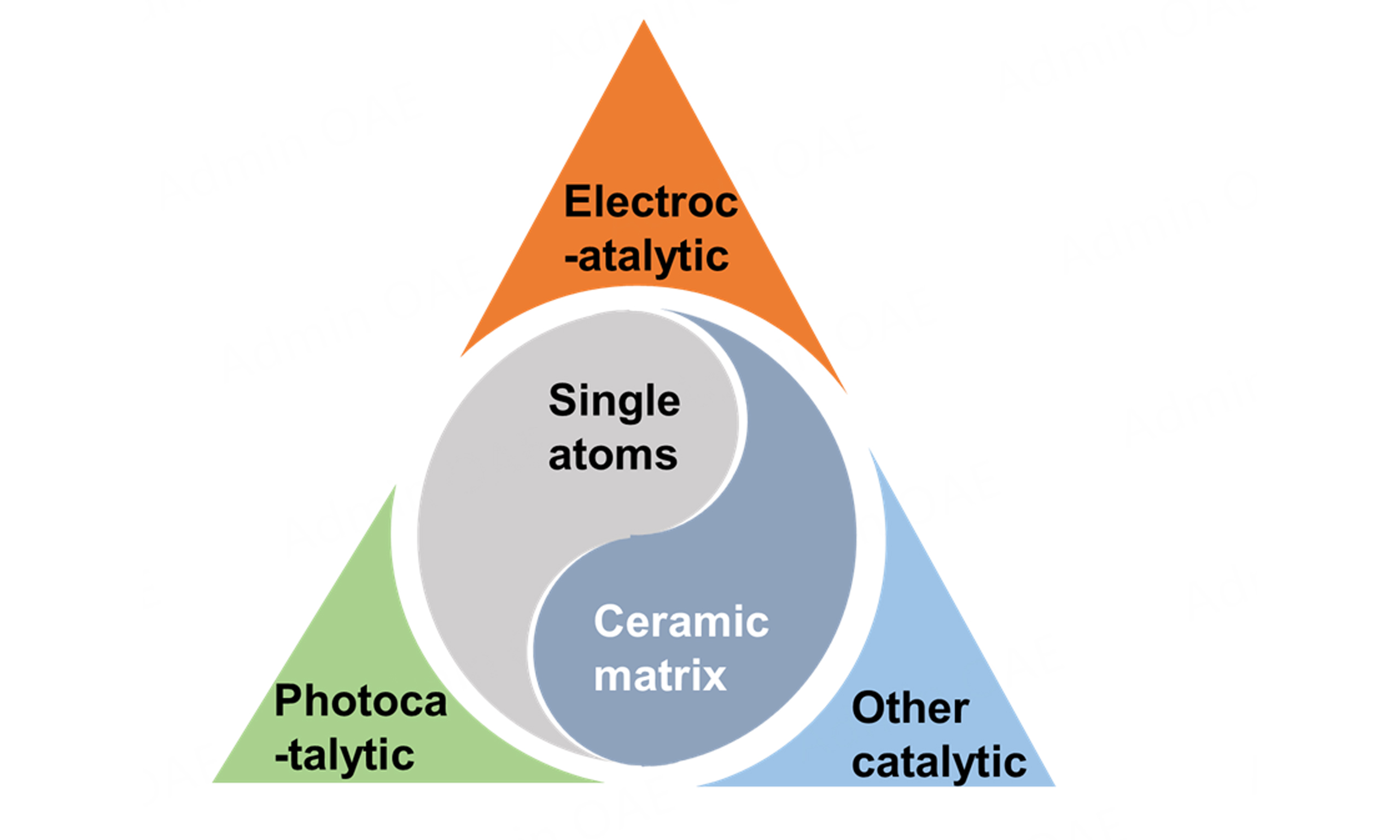
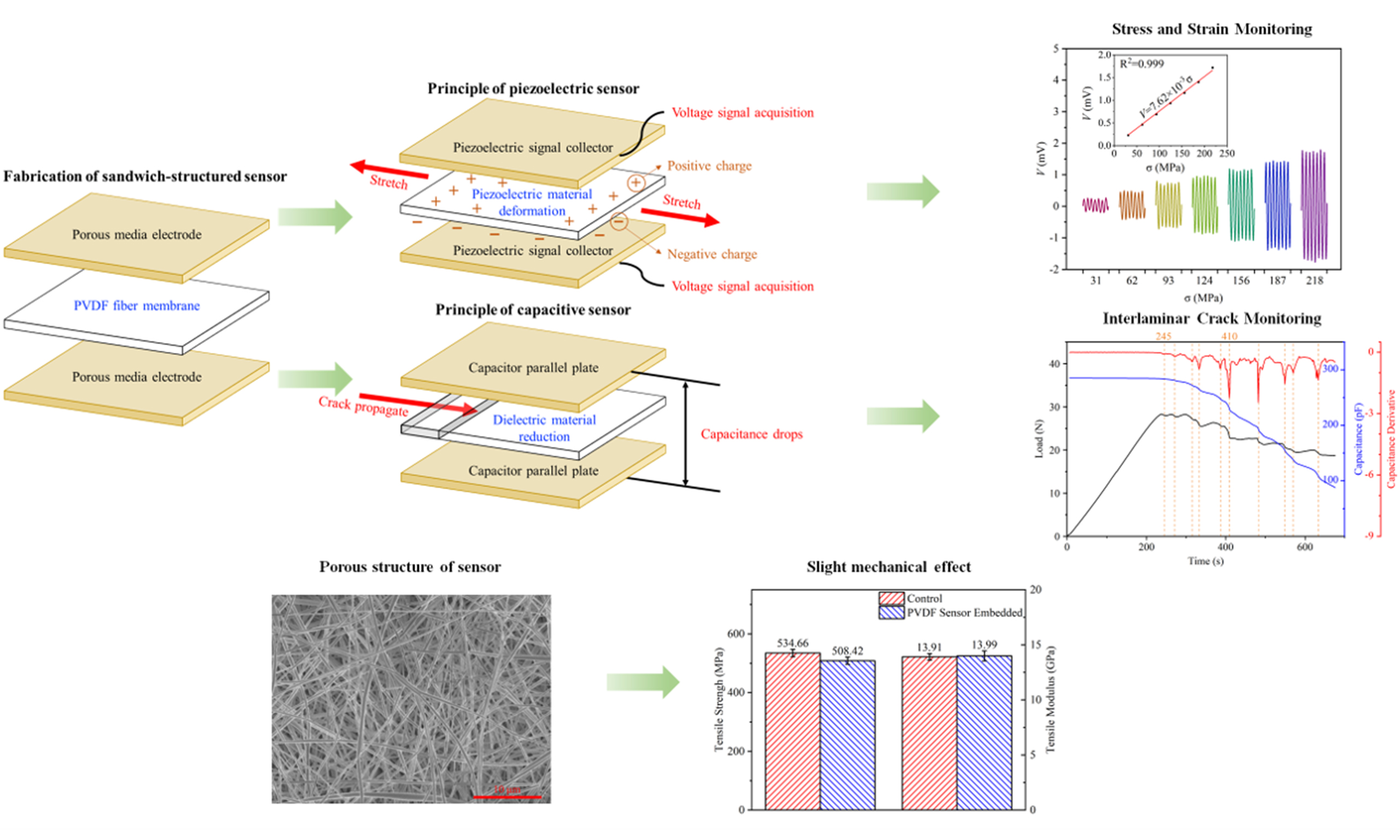
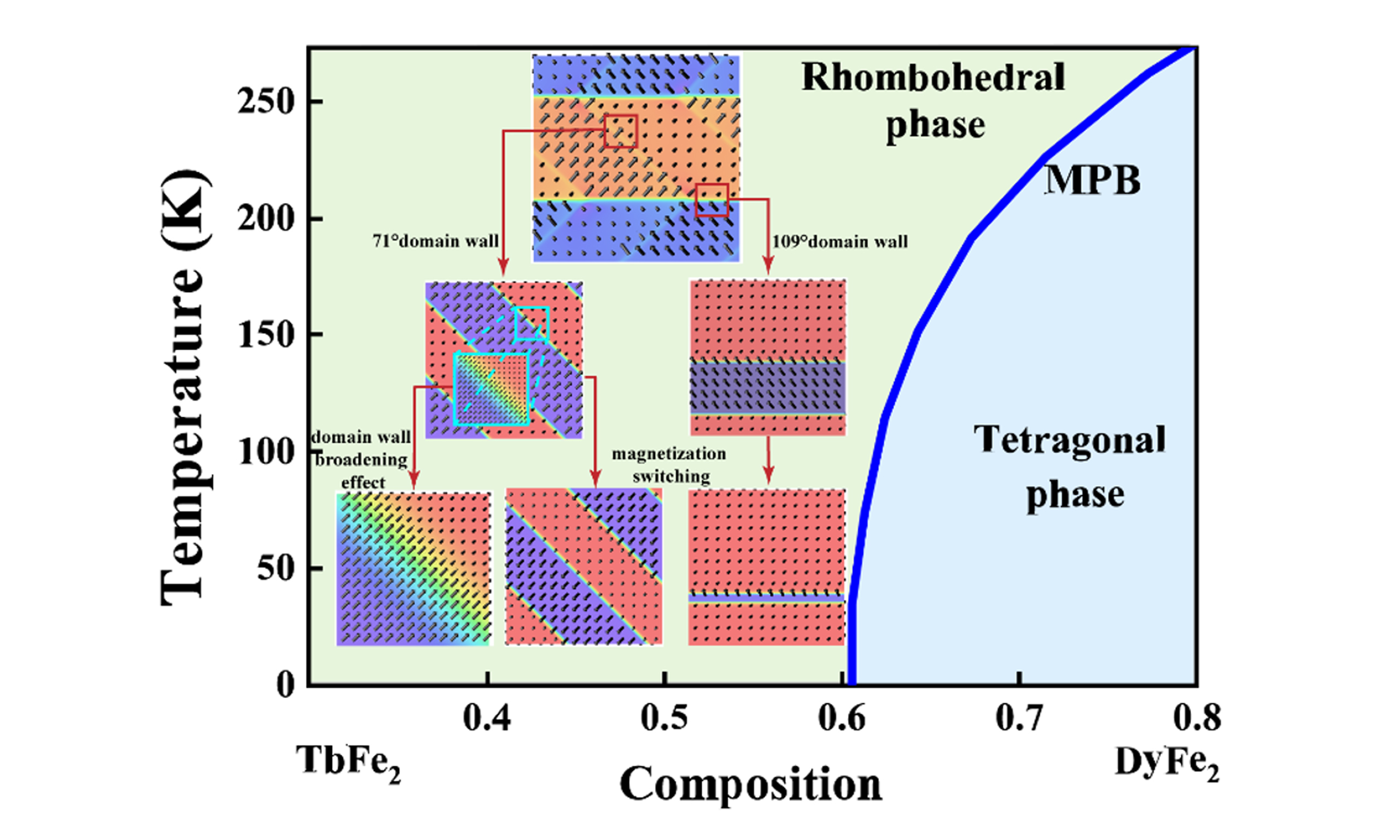







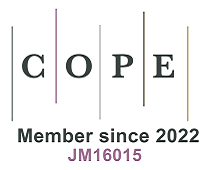








Comments
Comments must be written in English. Spam, offensive content, impersonation, and private information will not be permitted. If any comment is reported and identified as inappropriate content by OAE staff, the comment will be removed without notice. If you have any queries or need any help, please contact us at support@oaepublish.com.